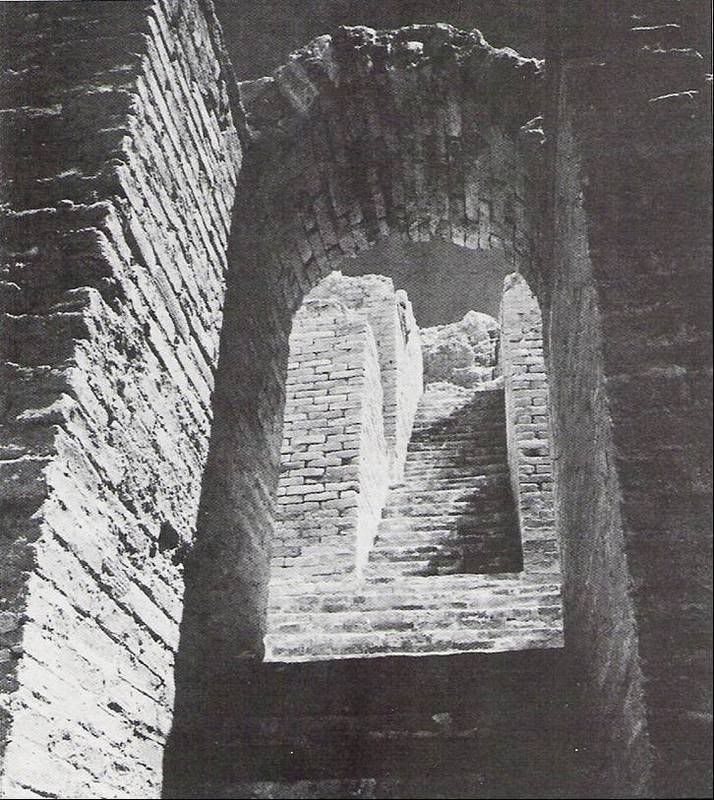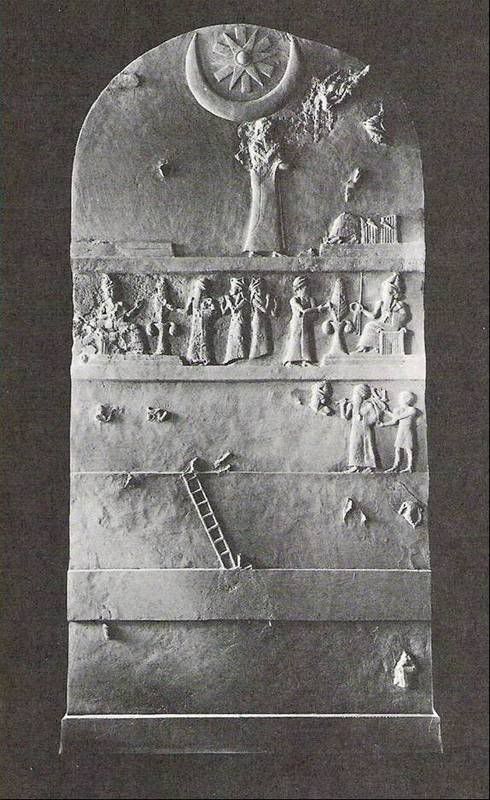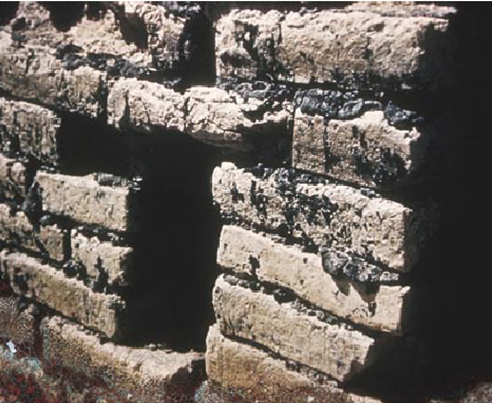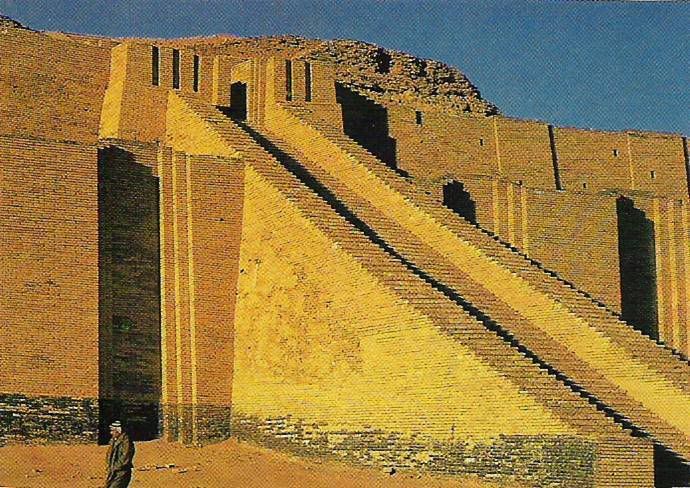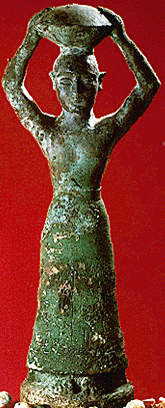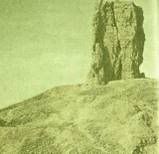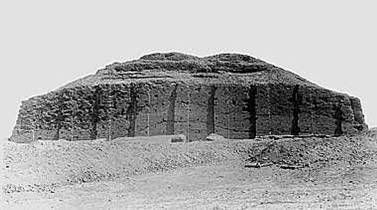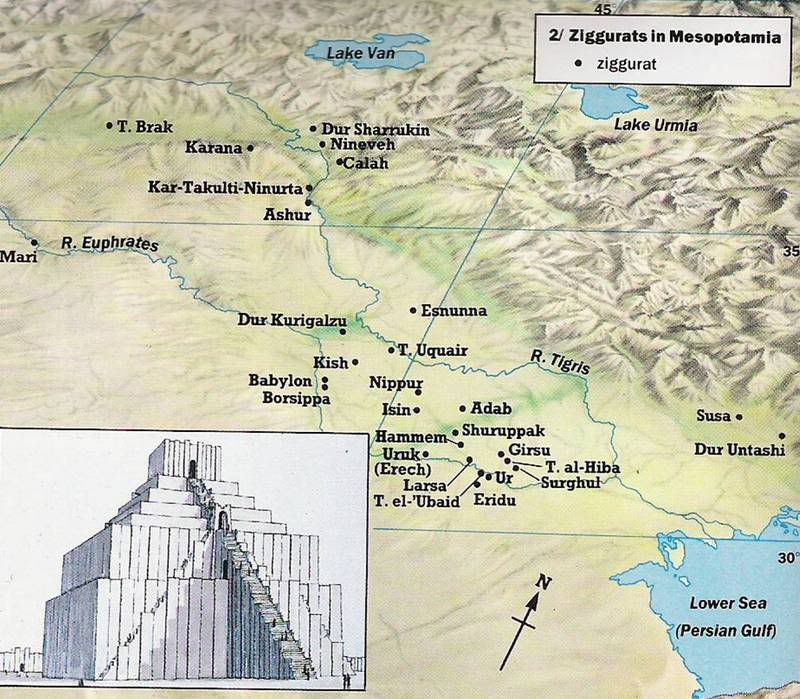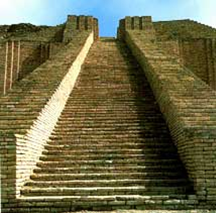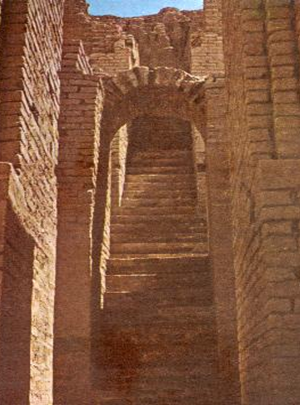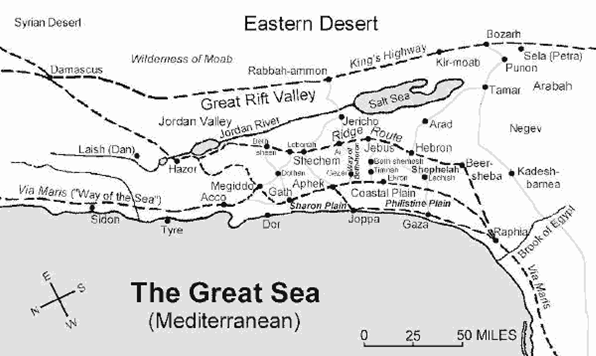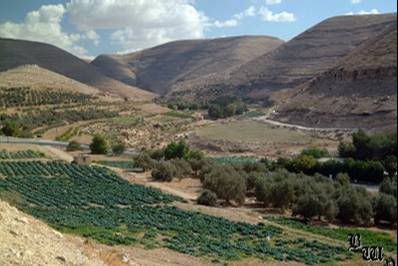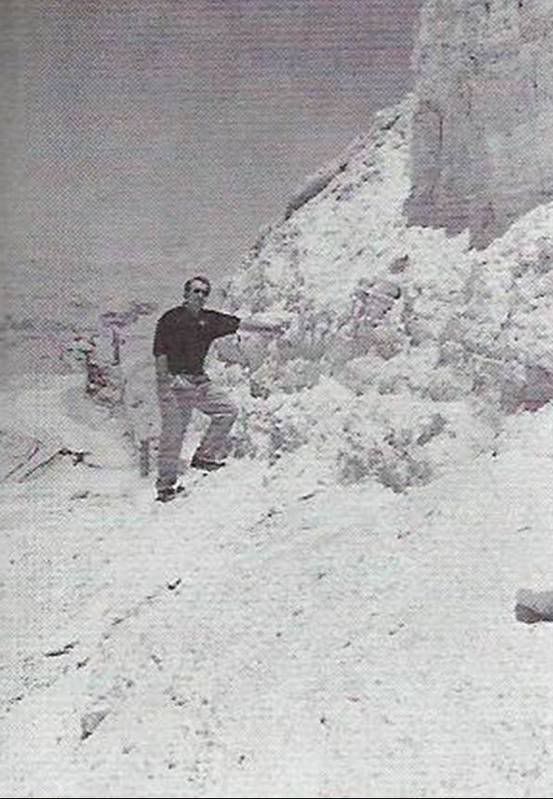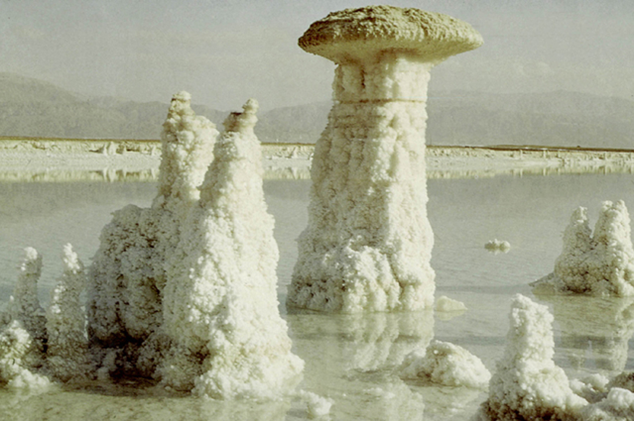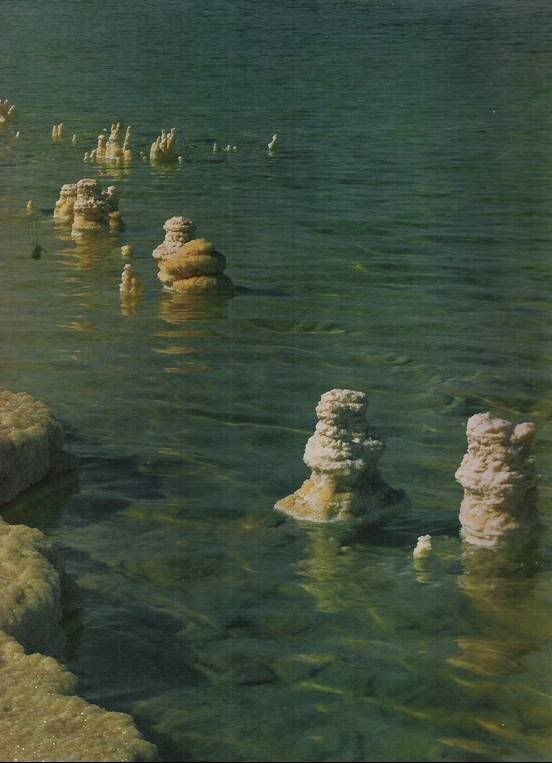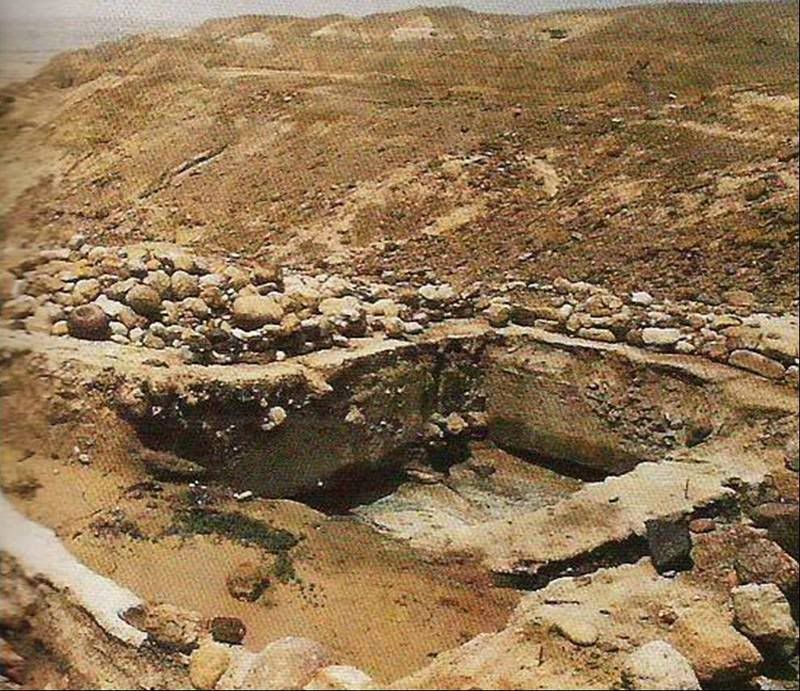© 2008 by sirhemlock@gmail.com
In his book Genesis Unbound Dr. John Sailhamer, a Hebrew scholar and biblical commentator of international reputation, has presented a fully exegetical interpretation of Genesis 1 which suffers no conflicts with contemporary sciences, no conflicts with the predominant viewpoints of contemporary Hebrew scholarship (as the Gap Theory encounters) and no logical difficulties of the order of things created (as the Day Age Theory encounters). Although it presents an exegetical "old earth" alternative to young age creationism, Dr. Sailhamer's book was actually given a very favorable review here by a prominent at "young age creationist" (YEC) at Probe.org
RESOLVING A TRADITIONAL CONTRADICTION
The phrase "the heavens and the earth" (השמים ואת הארץ) denotes an ordered cosmos in every known usage beyond Genesis 1 in the Hebrew Bible. Many contemporary commentators -including most of the "major" ones- hold that the "traditional view" that verses 1 & 2 of Genesis 1 both describe the same circumstance appears to import a contradiction into the text, namely that God created an ordered heavens and earth (vs 1), and that the earth is unordered (vs 2). In other words, if vs 1 (God created the heavens and the earth) denotes order, and vs. 2 (and the earth was formless and void, Heb. tohu & bohu/תהו ובהו) embodies absolute disorder, and these are taken as circumstantial clauses, we have the logical enigma "God created order" & "the earth was disordered." Further, the phrase "the heavens and the earth" is taken to mean shapeless precursor, though in no other passage does it have any meaning other than a completed, ordered cosmos.
WHERE MANY ANCIENT AND MODERN INTERPRETERS HAVE GONE WRONG
Sailhamer maintains that interpreters have gone wrong in interpreting tohu & bohu as "formless and void," an assumption which originated with the first Greek translation of the Bible, the Septuagint (LXX) which rendered it as "unseen and unformed" (avo,ratoj kai. avkataskeu,astoj) in order to accomodate the Bible to Greek cosmology which held the world was formed out of chaos. Sailhamer instead renders tohu & bohu as "an uninhabitable wasteland." The sense is that God had not yet fully prepared it as an ideal habitation rather than that it was a shapeless precursor or a totally chaotic mass. The creation narrative, according to Sailhamer, describes God's preparation of an uninhabitable wasteland as a suitable habitation for man. The tension described by many commentators between verse 1 and verse 2 may be dismissed, according to Sailhamer, as a false dichotomy which originated by reading tohu & bohu through the lens of ancient extra-biblical cosmology. No other author of scripture understood Genesis 1 as God shaping an infinitely pre-existing chaos.(as per ancient Near Eastern cosmologies); this idea is in direct conflict with teachings elsewhere in the Bible that God created everything that is out of nothing (e. g. Heb 11:3; Is 37:16; 45:7; Acts 17:24; Rev 4:11; Prov. 8:22-30; etc.; the details of the relationship of Genesis 1 to ancient Near Eastern cosmologies, in and of itself a major topic of discussion, is beyond our present scope; perhaps it can be addressed in a later post).
Sailhamer further points out that modern readers and most modern translators invariably read unnecessary and uncalled for modern assumptions into the text, mainly due to our understanding of the universe (which the Hebrews did not then have; this is done constantly by both modern proponents and detractors of the Bible. Sailhamer maintains the text cannot be proven to teach anything modern understanding would consider false). For example, “the earth” in Gen 1 translates ha-eretz (הארץ), which literally means “the land”; eretz (ארץ) is indeed most often translated as "land" rather than "earth" throughout the OT. What if we read ha-eretz as “the land” (i.e. visible) instead of reading “the spherical body which rotates around the sun” every time we see it? And without condemning the text as “wrong”! What would happen if we read the account as referring to preparation of an uninhabitable wilderness into a habitation ideally suitable for man, rather than as a convoluted ancient description of modern models of geological strata, biological progression over enormous epochs etc. (e.g. as some Day Age theorists attempt), and/or other concerns that were not even at issue until fairly recent times? To read our modern assumptions, or objections from modern assumptions, into the text, which virtually everyone does today including many scholars, is to read the text, says Sailhamer, in an anachronistic fashion.
WHAT IS ICE DOING IN JOB'S CREATION NARRATIVE?!
I’m not going to recount all of Sailhamer’s views (it took him a book length treatment to do that), however I’d like to provide a pictorial presentation of what Sailhamer’s viewpoint might look like (everybody loves a story with pictures) with a slight twist. I’m going to make one addition to Sailhamer’s picture: ice. Job 38, as is well known, presents a narrative of the six days of creation where ice, snow, hail, darkness, etc. are prominently mentioned. Ice is not specifically mentioned in Genesis 1. However if we take the two accounts canonically, we can speak of ice alongside the days of creation in the sense of canonical exegesis (the same procedure of canonical exegesis is utilized when ex nihilo creation (creation from nothing) is affirmed of Genesis 1 since although it is possible and reasonable to read Genesis 1 as presenting creatio ex nihilo it is not considered by contemporary scholars to be exegetically necessary or undeniable taking the text of Genesis 1 alone. If we consider how other biblical authors interpret creation, however, it is undeniable that the Bible as a whole presents a doctrine of creatio ex nihilo, and there is certainly nothing in Genesis 1 to forbid such an interpretation even of Genesis 1).
Secondly, since Sailhamer takes the creation days as normal 24 hr days (we might perhaps reasonably think of them as brief periods without departing too much from Sailhamer's model), the preparation of the land as a suitable habitation for man as Sailhamer describes it would have transpired in fairly recent times. Unquestionably it would be at the tail end of the last ice age on any accounting, just before the first extant evidence of agriculture and first known cities in the world (Jericho and Catal Hayuk, in Mesopotamia, are the first known cities, c. 9000BC), not too long before the critical melting at the end of the last ice age when most of Mesopotamia was inundated and the sea level worldwide rose some 350 feet (cf. the great 20th century archaeologist William Foxwell Albright believed this event inspired the great ancient Flood Narratives of the ancient Near East including the biblical account).
On grounds of canonical exegesis including the ice, hail, frost, snow, and darkness imagery in the days of creation in Job 38, the pictorial representation which follows will include melting ice as a pitch-dark atmosphere dissipates (comparison will also be made to the global dimming/cooling due to volcanism during the ice ages, the last of which ended in very recent times; such a comparison is, however, not required for the claim that what follows is exegetically warranted). After the pictorial representation, two brief outlines will be provided comparing the pictures presented by climatological, geological, and biblical models.
“…and darkness was on the face of the deep… Then God said, ‘Let there be light’” (Gen 1:2-3)

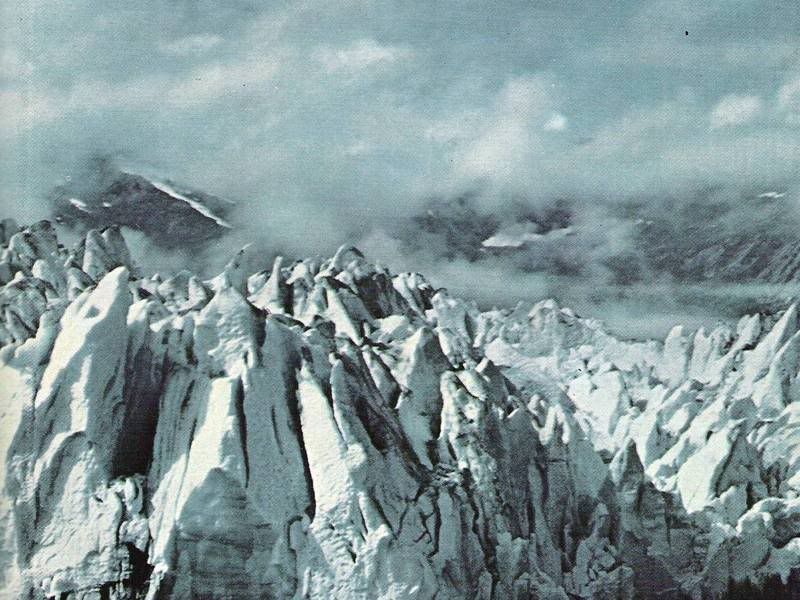
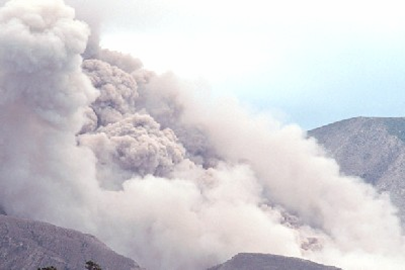




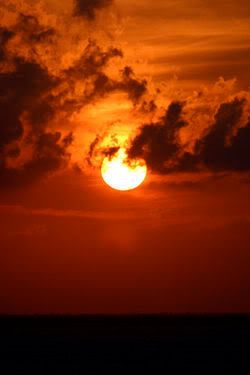
Climatologically speaking, this is what the world would have been like at the end of the last ice age: Extreme volcanism on a massive worldwide scale beyond anything we can imagine produced global dimming worldwide. The sky would not have been visible through the thick darkness produced by volcanic ash, and the world was extremely cold. Eventually, the ashes began to dissipate and sunlight warmed the land. Rapid arrival of a climate ideal for man occurred as the warm sun appeared after centuries of frigid cold and darkness (due to volcanic ash in the atmosphere). The ice began to melt; sometime later the ocean levels would come to rise 350 ft. during a period of rapid, critical melting.
I. BIBILCAL PROGRESSION (cf. ice, snow, and darkness/Job 38):
(1) Then God said, ‘Let there be light...’”
(2) Then God said, "Let there be an expanse in the midst of the waters, and let it separate the waters from the waters... God called the expanse "sky ..."
(3a) Then God said, "Let the waters below the heavens be gathered into one place, and let the dry land appear"; and it was so...he gathered waters he called "seas."
(3b) Then God said, "Let the earth sprout vegetation, plants yielding seed, and fruit trees bearing fruit after their kind..."
(4) Then God said, "Let there be lights in the expanse of the heavens to separate the day from the night, and let them be for signs, seasons, days, and years
(5) Then God said, "Let the waters teem with swarms of living creatures, and let birds fly above the earth in the open expanse of the heavens."
(6a) Then God said, "Let the earth bring forth living creatures after their kind: cattle and creeping things and beasts of the earth after their kind...".
(6b) Then God said, "Let Us make man in Our image, according to Our likeness; and let them rule over the fish of the sea and over the birds of the sky and over the cattle and over all the earth, and over every creeping thing that creeps on the earth."
II. GEOLOGICALLY/CLIMATOLOGICALLY/BIOLOGICALLY we have the following progression:
(1) Light shined through the ashen atmosphere.
(2) Blue sky appeared (first warmth; imagine if it was summertime in Mesopotamia!).
(3a) Ice melted into the seas and dry land appeared.
(3b) Vegetation appeared (sprouting).
(4) Sun moon and stars now functioned to divide days, seasons, and years.
(5) Birds flew and sea creatures swarmed.
(6) Land creatures spread across the earth; the rapid 350 ft rise in sea level which would occur sometime later as described previously was exacerbated e.g. by the huge glacial avalanche of along an enormous portion of the Mediterranean coast recently described by geologists; pretty much all of bowl-shaped Mesopotamia would have been inundated). Subsequently the first cities, first agriculture, etc. appeared (first in Mesopotamia, the land which is the focus of Genesis).
The progressions are identical. The above pictures adequately illustrate both progressions.
Additional notes
Natural births are seen throughout scripture as instances of God creating. Although the contrary is often claimed, Heb. bara (ברא “create”) does not necessarily denote creation “from nothing” (although canonically, the Bible indeed does teach that God made everything that is from nothing in the beginning). For example, although man was said to have been “created” in Genesis 1:27 -bara is used there- he was nevertheless formed using precursors “from the dust of the ground” (Gen 2:7/עפר מן־האדמה i.e. earthy materials) rather than having been created from nothing at all. Precursors are also either explicitly mentioned or possibly implied regarding of all of God’s creations in Gen 1:
A. grass, herbs and fruit trees sprouted from the earth (תדשא הארץ) producing “after their kind” (in the above scenario, as the sun melted the ice, the ground appeared and seeds sprouted);
B. An abundance of sea and sky creatures spread out, having been created (rather than “from nothing") “after their kind” (למינה) as warmth advanced.
Cattle and creeping things were blessed, multiplying after their kind (למינה rather than “from nothing,” we may understand "fruitful multiplication").
C. Lights now visible in the no longer darkened sky were "made," or "appointed" (Heb. asah; the Hebrew term is very often used, for example, of the appointment of kings and priests) to rule/govern (לממשלת) the day and night and mark the seasons (i.e. they were "made to rule"). As this function is established a bit after the earlier statement "let there be light," and an indeterminate period after the initial creation of the universe and solar system, the above view presumes the existence of the sun and stars beyond the veil of darkness prior to their usefulness for marking day night and season; there is nothing in the text to demand otherwise.
D. The woman is made from the man in Gen 2; the man is said to be composed from earthy materials -from the dust of the ground rather than from nothing (as discussed earlier). Biblically he is composed of the same material the animals were said to have been composed of, i.e. the same materials we can find in the earth. The land is made a suitable habitation for man to thrive. Man is specially bestowed with God’s image (בצלם אלהים). Nothing is said positively or negatively concerning the existence of pre-Adamite creatures in Genesis, as many conservative evangelicals strongly emphasize (cf. Dr. Gleason Archer, Encyclopedia of Bible Difficulties).
The above remarks about bara (ברא “create”) not denoting "creation out of nothing" (since it is used of man who is created out of something, the dust of the ground) should not be taken as contra the idea that biblically God is indeed said to have created the entire universe out of nothing as this idea is clearly and widely established throughout the Bible. Insofar as Sailhamer still does adamantly affirm the doctrine of creatio ex nihilo (creation of all from nothing), there is no reason to suppose Sailhamer's reading of Genesis 1 in any manner, shape, or form, diminishes God's powerful role as creator of everything that is. Jews and Christians were ridiculed for centuries for affirming the creation of all that is from nothing in the beginning... until Einstein -very reluctantly- embraced it.
DEATH BEFORE THE FALL?
In Genesis, eternal life before the fall was not a property belonging to any and all creatures merely by virtue of their existence and/or birth. It was derivative and conditional, and required partaking of the fruit of the tree of life on a continual basis:
Genesis 3:22-24 "Then the Lord God said, "Behold, the man has become like one of Us, knowing good and evil; and now, lest he stretch out his hand, and take also from the tree of life, and eat, and live forever, therefore the Lord God sent him out from the garden of Eden, to cultivate the ground from which he was taken. So He drove the man out; and at the east of the garden of Eden He stationed the cherubim, and the flaming sword which turned every direction, to guard the way to the tree of life."
There is no indisputable biblical reason to believe that man would have lived forever without partaking of the fruit of the tree of life. Nor is there any biblical reason to believe that there was ever such of a tree of life available to other living organisms such as phytoplankton, beetles, and bacteria. That man was not created with immortality as a property of his biology or his being is clearly suggested by the fact that, even in Eden steps were required, continual partaking of the fruit of the tree of life, to avoid physical death. Genesis portrays man’s “immortality” as having been derivative (“eternal life” was conditional rather than, in philosophical parlance, necessary): it involved partaking of the fruit of a tree on a continual basis, and abiding in the Lordship of God. Dietrich Bonhoeffer has shown quite effectively that many of the common theological ideas about “perfection” before the fall originated completely apart from, and in spite of, a sober reading of the text of Genesis. I would classify the pervasive YEC arguments about death first coming to phytoplankton, bacteria, and beetles only as a result of the fall in such a category. Death did, according to Genesis, first come to the pair who had been given the image of God and who had been hedged about in a special Garden, allowed to partake of the immortality of a special tree. This event is called the fall; it is according to Niebuhr the universal presupposition of all human history; our fallenness is indeed something which one can indeed read about in every newspaper and every history book; do we not see it in the mirror? Nowhere is man's fall from grace as memorably described as in the book of Genesis. If it seems to some that the interpretation as posited by YECs is textually possible, is there anything to demand it is textually necessary? Does not YEC import eisegetically things into the text not demanded by it, such as the immortality of vegetarian mosquitos? Being fruitful, multiplying, and immortal, our world would have been rapidly overrun by such creatures. There are also many YEC advocates who admit death in nature before the fall is inescapable. Being given every herb and plant to eat requires death of the material which is eaten, but the examples cited by prominent YECs in concession to this point are not even remotely restricted to that.
One minor difference I have with Sailhamer is that I take “the land” in Genesis 1 to refer to the visible land all about rather than as specifically as referring to “the promised land,” i.e. Palestine, as Sailhamer prefers it, but this difference does not affect the model depicted above.
Do take the time to read the positive review of Sailhamer's book by a young earth creationist here; it is a very interesting and fair-minded review.
Conclusion: If Sailhamer's exegesis of Genesis 1 is possible, which even YEC advocates admit, the pervasive "Flintstones exegesis" of the Bible is quite unnecessary, as the informed opinion of many very good Christian scholars also affirms today.

The present author does not regard any valid exegesis of Genesis 1 in terms of one being 'true' and others not, but more strictly in terms of which are exegetically 'valid' and 'invalid,' 'probable' and 'improbable.' I prefer to leave the matter of truth up to God. But what is presented above does make very good sense of the text IMO, and without importing a host of modern cosmological assumptions into it which were unknown to the time when Genesis was composed, and which are commonly injected into Genesis 1 not only by run of the mill atheists and Christians, but also -as Sailhamer argues- by a great deal of contemporary academic scholarship, and without being fully aware of it. Perhaps mention of Ice Age global dimming due to volcanism is just another example of a similar form of conceptual idolatry in the final analysis (in spite of the fact that ice and darkness at creation are biblically warranted), however the present author makes no claims to be an across the board purist... Sailhamer's original presentation, of course, does not suffer from such shortcomings.

